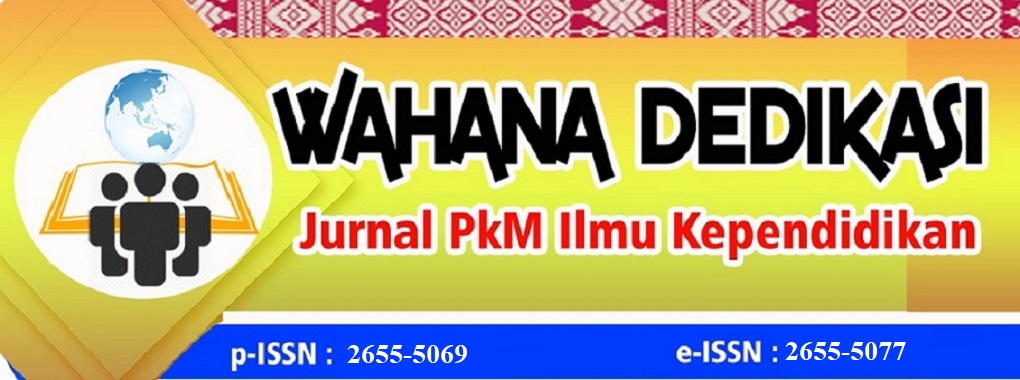Analisis Efektifitas Media Pembelajaran Phypox Berbasis Android Pada Pembelajaran Fisika SMA Pada Materi Tumbukan
DOI:
https://doi.org/10.31851/dedikasi.v5i2.8307Keywords:
Learning Media, Phypox Application, Collision, EffectivenessAbstract
Communication relations between teachers and students will be better and more efficient. In learning physics, each high school has limited practical tools. This underlies the research on the effectiveness of learning media for the Android-based phypox application. Media in the learning process has a role as teaching aids and learning resources that are used by students independently. Environmental-based learning includes the use of the environment with the object observation process. The environmental-based learning media in this study used android to study collision physics material and experimental results used android to access the phypox application that could be used for collision materials. The method used is an experimental method with a quasi-experimental design with two groups only posttest, namely two classes that are compared through a posttest. The purpose of this study is how effective the use of phypox learning media on collision material is. The data was processed through a descriptive test on SPSS obtained from the posttest. Followed by hypothesis testing to determine the effectiveness of Android-based phypox learning media on collision material. The experimental results showed that this media was effective as indicated by the results of the Independent T-Test test with less than 0.95. So that the experimental class activities can answer more posttest questions than the control class.
References
Dahnuss, D., Marwoto, P., Iswari, R. S., & Listiaji, P. (2021, June). Marbles and smartphone on physics laboratory: an investigation for finding coefficient of restitution. In Journal of Physics: Conference Series. 1918( 2) : 022005.
Flara, R. L., Pitriana, P., & Nuryantini, A. Y. (2021). Pemanfatan Sensor (In) Elastic Collision Pada Aplikasi Phypox Dalam Pengembangan LKPD Untuk Meningkatkan Kemampuan Kognitif Peserta Didik Pada Materi Momentum dan Implus.. In Seminar Nasional Fisika. 1(1): 78-92.
Gibbs, H. (2019). Proposal of Experimental Activities in Physics Class through the use of Smarthphones. Journal of Physics Teaching. 31(Extra): 359-367.
Juita, S. T., Seko, M. S., Seku, A. Y. &, & Astro, R. B. (2020). Penentuan Koefisien Restitusi Benda Menggunakan Metode Video Tracking. Optika :Jurnal Pendidikan Fisika. 4(1), 46–53.
Suparman, M. 2016. Pengembangan Media Pembelajaran Fisika Berbasis Lingkungan dengan Memanfaatkan Komputer Siswa Kelas X SMA Negeri 1 Ulaweng. Jurnal Sains dan Pendidikan Fisika. 12(2): 136-145.
Staacks, S., Hütz, S., Heinke, H., &Stampfer, C. (2018). Advanced tools for smartphone-based experiments: Phyphox. Physics Education. 53(4), 1–8.
Liwun, K. B., Ecing, F. Y., Pora, E. M., Astro, R. B., & Ika, Y. E. Penentuan Koefisien Tumbukan Menggunakan Aplikasi Phypox. Jurnal Sains dan Pendidikan Fisika, 17(3) : 226-239.
Mulyani, F. 2021. Analisis Perkembangan Ilmu Pengetahuan dan Teknologi (IPTEK) dalam Pendidikan. Jurnal Pendidikan dan Konseling. 3( 1): 101-109.
Shelin Novitasari, Djeli Alvi Tulandi, J. L. (2021). Pengembangan Panduan Praktikum Online Menggunakan Smartphone Berbasis Aplikasi Phypox. Jurnal Pendidikan Fisika, 2(1) 35–42.
Downloads
Published
Issue
Section
License
Authors who publish this journal agree to the following conditions:The author has the copyright and entitles the journal to the first publication with works that are licensed simultaneously under the Creative Commons Attribution CC BY License which allows others to share their work with the recognition of the authorship of the work and initial publications in this journal.
Â
The author can make separate additional contract agreements for the non-exclusive distribution of published journal versions of the work (for example, posting them to the institutional repository or publishing them in a book), with recognition of the initial publication in this journal.
Â
Authors are permitted and encouraged to post their work online (e.g., in institutional repositories or on their websites) before and during the delivery process because it can lead to productive exchanges, as well as quotes that are earlier and larger than published works





.png)



